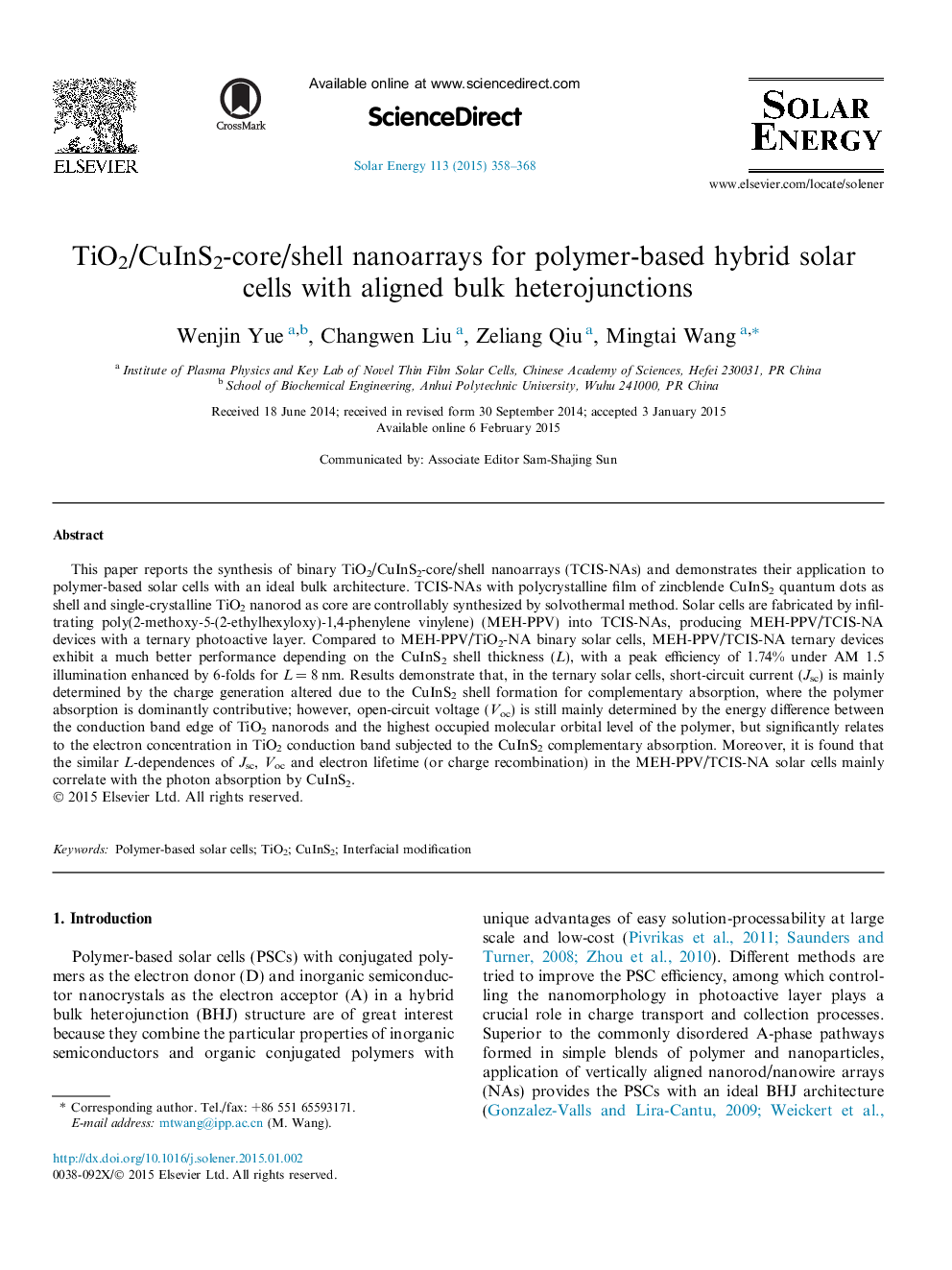| کد مقاله | کد نشریه | سال انتشار | مقاله انگلیسی | نسخه تمام متن |
|---|---|---|---|---|
| 1549738 | 1513105 | 2015 | 11 صفحه PDF | دانلود رایگان |

• Vertically aligned TiO2/CuInS2-core/shell nanoarrays are synthesized.
• Polycrystalline CuInS2 shell acts as complementary photon absorber.
• Single-crystalline TiO2 nanorod core offers direct electron transport channel.
• Solar cells are fabricated by filling polymer into TiO2/CuInS2-core/shell nanoarrays.
• Device performance dependent on shell thickness is governed by CuInS2 absorption.
This paper reports the synthesis of binary TiO2/CuInS2-core/shell nanoarrays (TCIS-NAs) and demonstrates their application to polymer-based solar cells with an ideal bulk architecture. TCIS-NAs with polycrystalline film of zincblende CuInS2 quantum dots as shell and single-crystalline TiO2 nanorod as core are controllably synthesized by solvothermal method. Solar cells are fabricated by infiltrating poly(2-methoxy-5-(2-ethylhexyloxy)-1,4-phenylene vinylene) (MEH-PPV) into TCIS-NAs, producing MEH-PPV/TCIS-NA devices with a ternary photoactive layer. Compared to MEH-PPV/TiO2-NA binary solar cells, MEH-PPV/TCIS-NA ternary devices exhibit a much better performance depending on the CuInS2 shell thickness (L), with a peak efficiency of 1.74% under AM 1.5 illumination enhanced by 6-folds for L = 8 nm. Results demonstrate that, in the ternary solar cells, short-circuit current (Jsc) is mainly determined by the charge generation altered due to the CuInS2 shell formation for complementary absorption, where the polymer absorption is dominantly contributive; however, open-circuit voltage (Voc) is still mainly determined by the energy difference between the conduction band edge of TiO2 nanorods and the highest occupied molecular orbital level of the polymer, but significantly relates to the electron concentration in TiO2 conduction band subjected to the CuInS2 complementary absorption. Moreover, it is found that the similar L-dependences of Jsc, Voc and electron lifetime (or charge recombination) in the MEH-PPV/TCIS-NA solar cells mainly correlate with the photon absorption by CuInS2.
Figure optionsDownload as PowerPoint slide
Journal: Solar Energy - Volume 113, March 2015, Pages 358–368